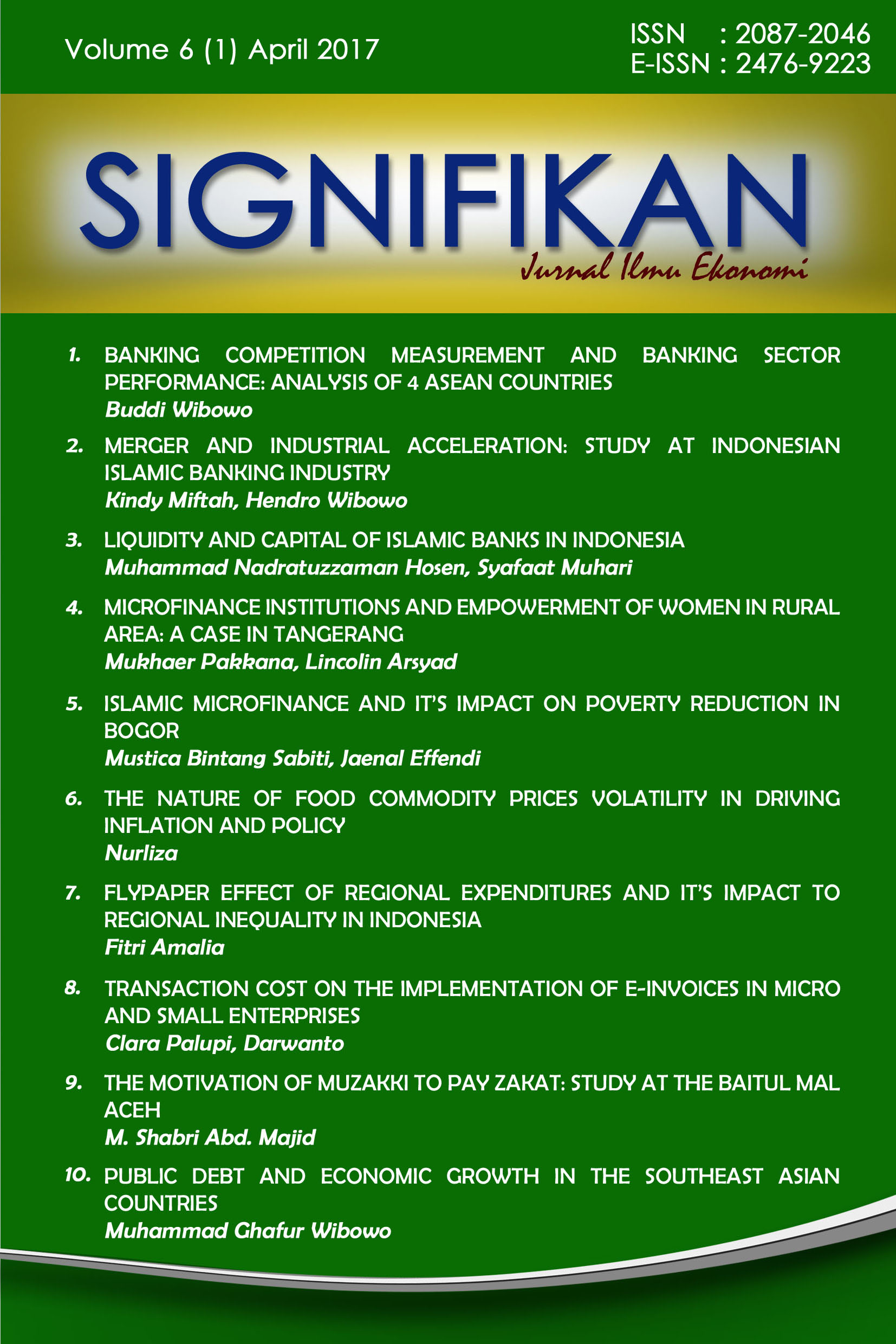Merger and Industrial Acceleration: Study at Indonesian Islamic Banking Industry
DOI:
https://doi.org/10.15408/sjie.v6i1.4728Keywords:
Islamic banking, merger, valuation, discounted cash flowAbstract
The purpose of this research tries to feed the alternatives of merger between Islamic banks which becomes a form of recommendation to optimize the merger result, so it will contribute to the development of Indonesia’s banking sector in particular. Methodology of this study is using comparison technique utilize result of calculation valuation based on valuation theory in general with method discounted cash flaw (DCF). Valuation data processing using data past performance sharia banks is to plan future financial performance. Results of valuation will be conducted both with individual banks that will be merged and alternative merger determined. These findings implied from various possibility alternative mergers between sharia banks, there are 5 alternatives that are feasible considering the internal aspect such as tendency shareholder and condition sharia bank to be merged related to internal interest and external aspect namely scale of assets from merger banks and probability success from merger process.
References
Al Arif, M.N.R. (2015a). Impact of Spin-off Policy on The Asset Growth on Indonesian Islamic Banking Industry. Journal of Islamic Economics, Banking, and Finance. Vol. 11, No. 4: 41-52.
Al Arif, M.N.R. (2015b). Keterkaitan Kebijakan Pemisahan Terhadap Tingkat Efisiensi Pada Industri Perbankan Syariah di Indonesia. Jurnal Keuangan dan Perbankan. Vol. 19 (2): 295-304.
David, F.R. (2007). Strategic Management: Concepts and Cases. Upper Saddle River: Pearson Education Inc.
Epstein, M.J. (2005). The Determinants and Evaluation of Merger Success. Business Horizons. Vol. 48 (1): 37-46.
Gitman, L.J. & C.J. Zutter, Chad J. (2012), Principal of Managerial Finance, Boston: Prentice Hall.
Hamid, A. (2015), The Impact of Spin-off Policy to the Profitability on Indonesian Islamic Banking Industry. Al-Iqtishad. Journal of Islamic Economics. Volume 7 (1): 117-126.
Haribowo, Ismawati, (2017), The Indonesian Islamic Bank’s Spin Off: A Study In Regional Development Banks. Al-Iqtishad. Journal of Islamic Economics. Volume 9 (1): 53-68.
Hite, G.L. et.al. (1984). The Separation of Real Estate Operations By Spin-Off. Real Estate Economics. Volume 12, Issue 3: 215-416.
Higgins, R. & L. Schall. (1975). Corporate Bankruptcy and Conglomerate Merger. Journal of Finance 30: 93–113
Johnson, G, et.al. (1994). The Market Reaction to Voluntary Corporate Spin-Offs: Revisited. Quarterly Journal of Business and Economics. Vol. 33 (4): 44-57.
Kim, E.H. & J. McConnell. (1977). Corporate Mergers and The Co-insurance of Corporate Debt. Journal of Finance. Vol. 32: 349–365.
Leland, H.E. (2007). Financial Synergies and The Optimal Scope of the Firm : Implications for Merger, Spinoff and Stuctured Finance. The Journal of Finance. Volume LXII, No.2: 765-807
Lindholm-Dahlstrand, Å. (2000). Entrepreneurial origin and spin-off performance. Proceedings of the Paper Presented at Babson College Kauffman Foundation Entrepreneurship Research Conference, June.
Morellec, E. & A. Zhdanov. (2005). The Dynamics of Mergers and Acquisitions. Journal of Financial Economics. Vol. 77 (3): 649–672.
Pratt, S. (2008), Valuing a Business; The Analysis and Apprisal of closely Held Companies (Fifth Edition). New York: McGraw Hill.
Scott, J. (1977). On the Theory of Corporate Mergers. Journal of Finance. Vol. 32: 1235–1250.
Shastri, K. (1990). The Differential Effects of Mergers on Corporate Security Values. Research in Finance. Vol. 8: 179–201.
Steiger, Florian. (2008), The Validity of Company Valuation Methods Using Discounted Cash Flow. Paper Conference. Europan Business School.
Stapleton, R. (1982), Mergers, Debt Capacity, and The Valuation of Corporate Loans. in M. Keenan and L. White, eds.: Mergers and Acquisitions. Lexington: Lexington Press.
Weil, J.V.D & D. Cole. (2008). Merger and Acquisition Integration Methodology, Petroleum Accounting and Financial Management Journal. Vol.27 (2): 88-101
Walker, G. (2003). Modern Competitive Strategy. New York: The McGraw-Hill.
Wheelen, T.L. & D.J. Hunger. (2008). Strategic Management and Business Policy. Upper Saddle River: Pearson Education Inc.


